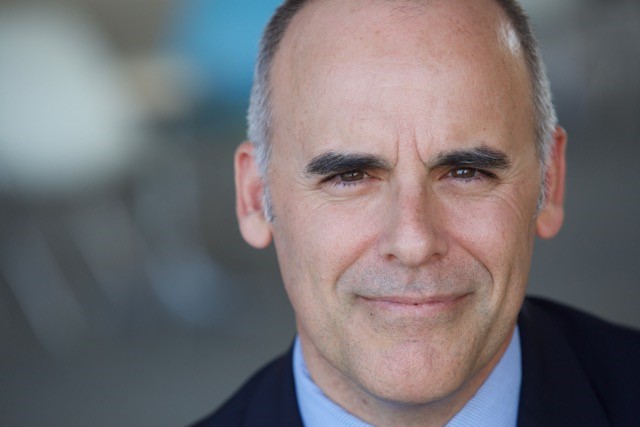901 Tower Drive • Suite 420 •
Troy, Michigan 48098
• P: 248.269.1122 •
E: bianchipr@bianchipr.com
901 Tower Drive • Suite 420 •
Troy, Michigan 48098
• P: 248.269.1122 •
E: bianchipr@bianchipr.com

Alan Ohnsman is the senior editor for future mobility at Forbes. His job is to write about interesting companies and entrepreneurs applying or developing new technology to make transportation better, from traditional automakers and tech giants to startups, truckmakers, innovative data services and new urban mobility options.
Can you tell us what types of stories, trends or issues are on your radar now?
There’s a lot of innovation happening in trucking and logistics at the moment, from cleaner electric powertrains to ever-higher levels of automation. It’s going to have a big impact on the movement and delivery of goods in the next few years. I’m also broadly tracking the development of autonomous vehicle technology which, despite being on a somewhat slower path than projected for applications like robotaxi services, keeps advancing.
Describe the craziest or most fun story you have written.
In January 2009, I was interviewing a downbeat Elon Musk with some Bloomberg News colleagues at the Detroit auto show. Tesla’s financial situation was dire and the outlook was worse: The company had fired about a third of its employees, closed a Michigan engineering facility and was struggling to produce its first Roadster sports cars. During the interview, Musk got a call that he said he needed to take, but promised to return. After more than a half-hour, as I was packing up my gear, he came back in a much better mood and said he had some news. The call was from Daimler, which agreed to buy 1,000 Tesla battery packs. It was a small deal, but it helped Tesla avoid early death and was the first of a string of fortuitous developments for the company. It wasn’t so much the story I wrote that day, but rather the opportunity to see how one call changed a company’s fate that stays with me.
What story or stories are you most proud of?
A 2017 profile of lidar pioneer David Hall was an opportunity to highlight a behind-the-scenes figure who was key to the creation of an autonomous vehicle industry by inventing and commercializing Velodyne’s spinning laser sensors.
What elements or characteristics do you look for in a story?
An interesting person, concept or product with a shot at success that addresses a legitimate need or overlooked opportunity, combined with a well-defined plan to make it happen and reasonable financing.
How long have you been in journalism and how did you get started?
Fell into journalism by accident in Tokyo. I spent my first couple years in that remarkable city teaching English, proofreading ad copy and contributing material for travel magazines. My first real journalism job came in 1991 as a copy editor and staff writer for a small English-language newspaper published by one of the major Japanese dailies, with side gigs at a local magazine and editing copy for NHK’s Radio Japan. Lots of good memories doing all kinds of oddball stories (covering Timothy Leary talking about Internet gaming and virtual reality years before those were really a thing; interviewing actor Tony Curtis about a big magic show he was hosting in Tokyo, and watching him suck his stomach in when the photo shoot started!) and learning the basics of reporting.
Returned to the U.S. to attend Columbia University’s Graduate School of Journalism, then went back to Tokyo after graduating to work in Businessweek’s local bureau for a bit. Next came a five-year foray in equity research departments for a couple investment banks. Learned a lot but missed having a byline so I joined Bloomberg’s Tokyo bureau. Covered transportation in Asia for a couple of years before being transferred to the Los Angeles bureau, where I stayed until 2014. In total, I had a great 15 years with Bloomberg before deciding to try something else. It didn’t take. And much like the Godfather’s Michael Corleone, I was once again pulled back into journalism, joining Forbes in 2016. It’s been a fun run so far with, hopefully, lots more to come!

Finish this sentence: If I am not reporting, I am …
Spending time with my family, running, biking or walking trails in L.A.’s Griffith Park or working on new songs and playing drums with my long-running band Rocket Chirac (our newest album, Music For The Middle Ages, can be streamed on Spotify and is available on iTunes, GooglePlay and Amazon).
What advice do you have for PR people that want to pitch you?
Before reaching out, check the kinds of stories I write. A clear pattern will emerge. Random pitches that are outside of my regular coverage probably won’t be successful, unless there’s a really unique or compelling hook.
Any pet peeves with PR people?
See answer above
Tell us a little about yourself (family, interests, hobbies, background, etc.)
I love Los Angeles, the least well-understood large city in the United States. Didn’t grow up here (I’m a Central Ohio native), but after 18 years it’s home and an endlessly fascinating one. Sure the traffic is lousy and there are earthquakes and fires, but those are offset by the city’s diversity, great weather, endless food options, museums and opportunities for live music.
Music is a major element of my life outside of work and has been a passion since my teens. As a consumer and listener, my tastes are wide-ranging, covering pretty much all eras and genres of rock (excluding bad 80s hair metal) and lots of jazz and classical. The only thing better than listening to music or attending a live show is playing it, which I do as often as possible!
You can follow Alan on Twitter at: @alanohnsman
One Trackback